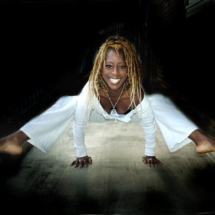Ashtanga and Vinyasa yoga .
Ashtanga yoga is a very dynamic and popular form of yoga, which stems back thousands of years. People from all walks of life practice this beautiful art form.
Now in many gyms it is known as power yoga.
This yoga is a combination of posture, breath, and movement linked together by what we call vinyasa, which strengthens, tones and detoxifies.
Ashtanga yoga should not be misunderstood and thought of as a difficult form of yoga, for it is not. People have their preferences.
Vinyasa flow yoga.
Flow refers to the fluid way one move, or asana, goes into the next. One of the connecting elements is breathing. A Vinyasa flow should be done in sync with the breath. It’s got a very different feel from Hatha yoga, a more static practice which asks participants to settle into poses for longer periods of time, taking breaks before moving onto the next
The term “Vinyasa” comes from the ancient Indian language Sanskrit. “Vi” means “in a certain way” and “nyasa” means “put, place, lay”
There’s no prescription for what the practice will look like from class to class. That is what makes Vinyasa Yoga so special: In contrast to Ashtanga yoga, where there are fixed series of exercises, Vinyasa is a free, creative style.
Vinyasa Yoga is creative and liberating.There are recurring asanas, but no fixed exercise sequences.
The class is taught completely free in the design of flows, so that the practice continues to be surprising and challenging.
The dynamic asanas are combined with a controlled breathing technique, called Ujjayi breathing.the path from one posture to the next is given just as much attention as the asanas themselves. These are controlled, purposeful movements that require balance, strength, and an awareness of your body in space. All elements are linked, resulting in a flow.
All forms of yoga have importance , bringing calm and peace of mind to its practitioners.
